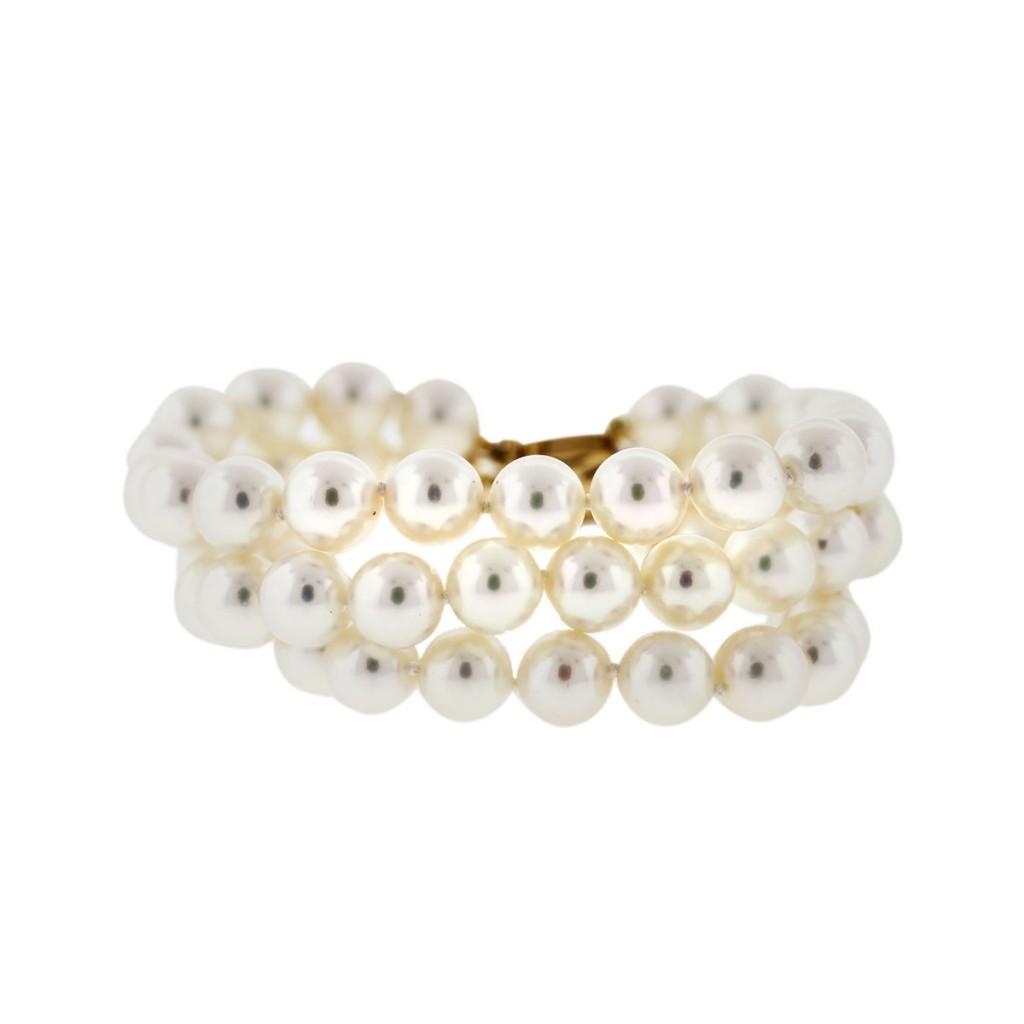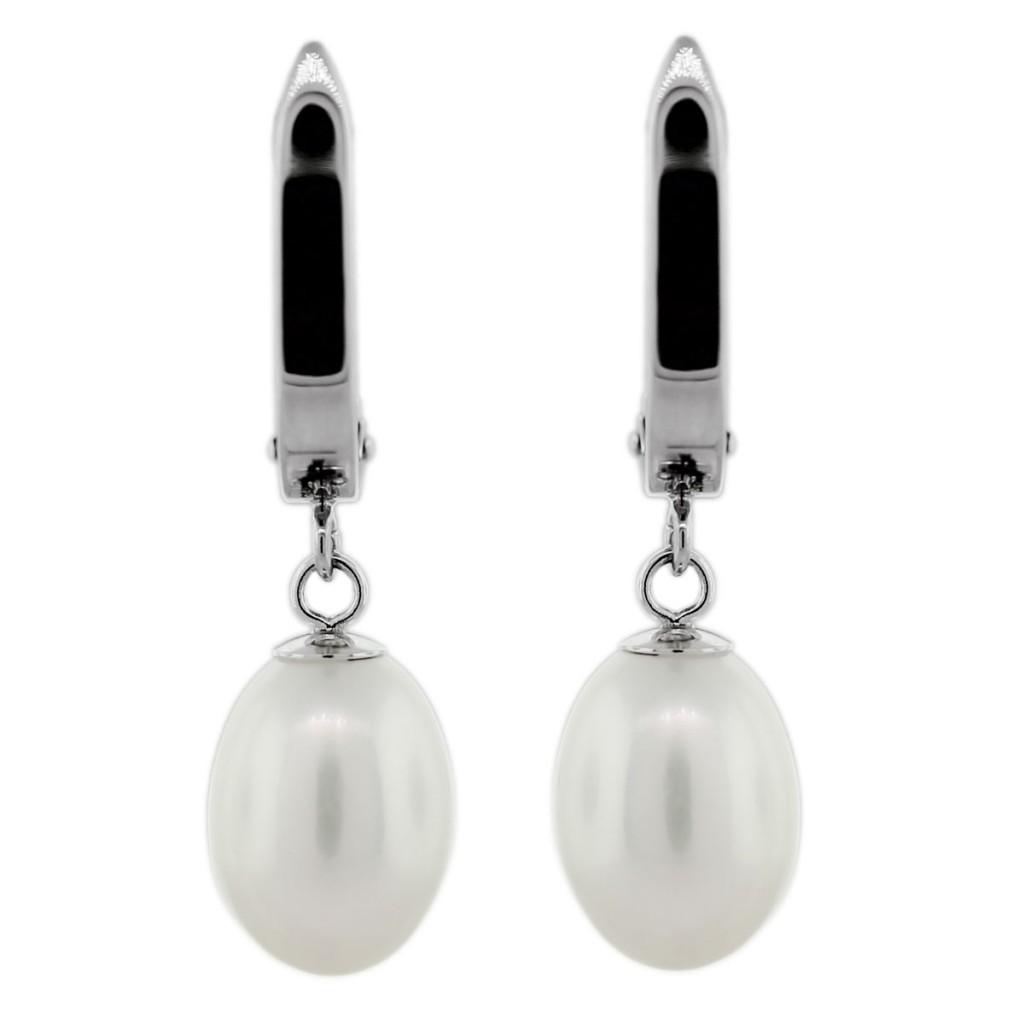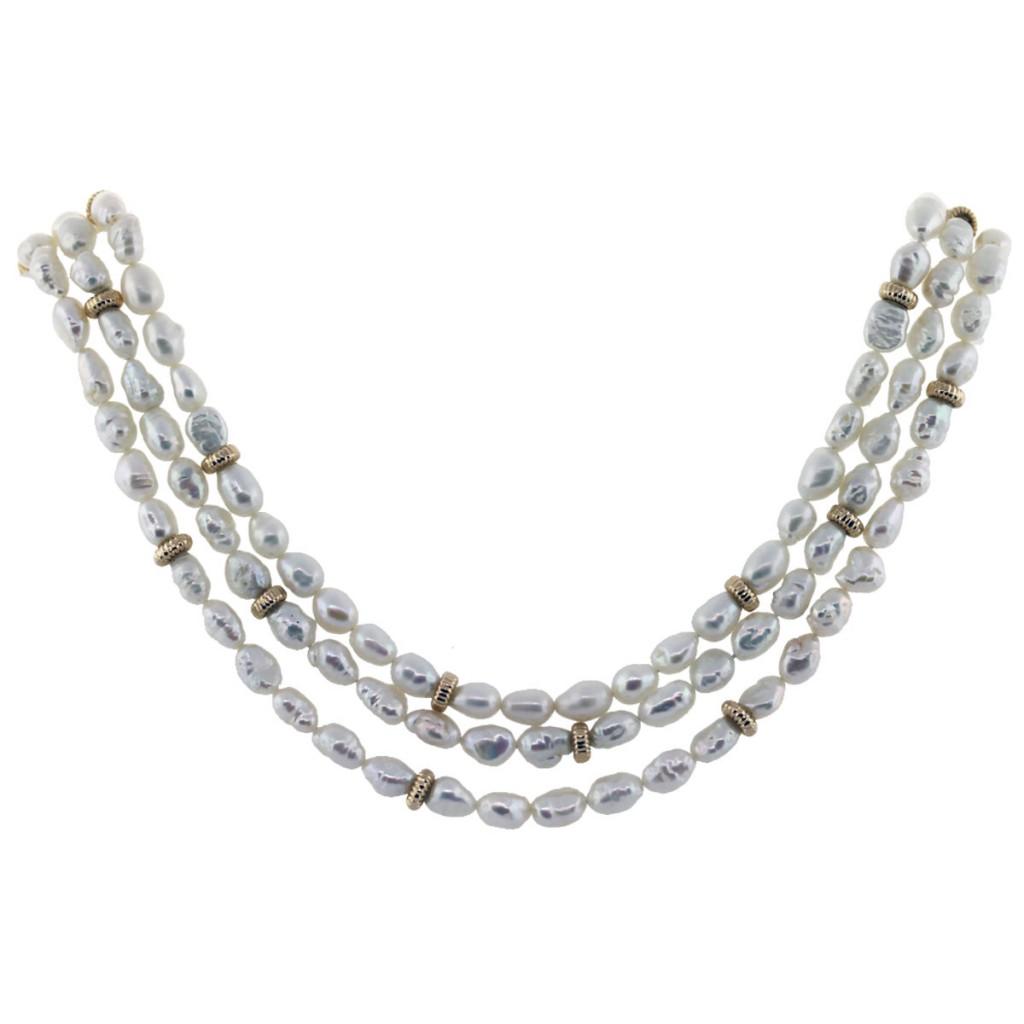Pearls have long been revered for their simple and luminous allure. Nicknamed the “Queen of Gems,” these unblemished beauties were treasured in early history as near-priceless; in fact, for many years, pearls were the the world’s most expensive jewels. The ancients even believed they had magical powers. While pearls today have lessened in value compared to other gems, their luminous loveliness remains widely admired. When considering a purchase of pearl jewelry, some shoppers are confused by the variety of types available, particularly regarding natural and cultured pearls. The only significant difference between the two? Human intervention.

Mikimoto 18k Yellow Gold Triple Pearl Bracelet
Exceptionally rare, natural pearls are found exclusively in the wild. Their origins belie their eventual grace: they are created when an irritant penetrates the soft tissue of an oyster’s mussel, causing the threatened animal to secrete a coating. Layers upon layers of this coating eventually smooth the irritant into a pearl, which is then hunted, harvested, cleaned and finally fashioned into fine jewelry. While most natural pearls are iridescent, they vary in size and shape because of their organic nature. Because of the serendipitous process, as well as the length of time required to generate a pearl, it can take over 100,000 oysters to make a simple necklace. The result is a stunning–and pricey–work of art and nature.

14k White Gold Pearl Drop Earrings
Cultured pearls develop in the same way, albeit with a little help. Grown on pearl farms under controlled conditions, the stimulant is actually a mussel shell core implanted by human hands. The oyster manifests the same defensive mechanism, and the process continues from there. Unlike natural pearls, cultured pearls are engineered to be consistent in shape and sheen; some are even bleached before becoming jewelry, enhancing their flawless appearance. While some people refer to cultured pearls as “imitation,” they are mistaken: cultured pearls are made of the same material as natural pearls. Still, they are generally less costly, if only because they are more accessible.


